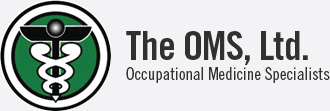
Reproductive Effects
Can Lead Affect Reproductive Health?
Lead poisoning occurs when small amounts of lead build up in the body during periods of prolong exposure. Once this occurs, lead poisoning can lead to a variety of health problems for both male and female fertility and reproductive systems.
How are Men Affected?
In men, blood-lead-levels (BLL) exceeding 40 μg/dL can cause a reduction in sperm count,1 a rise in sperm motility,1 and an increased rate of abnormal sperm.2
How are Women Affected?
While several studies have implicated lead as contributing to reproductive difficulties and abnormal fetal development, these effects have not been well-established at low exposure levels. There is, however, an established connection between lead toxicity and increased risk of pregnancy complications. Pregnant women with an elevated blood lead levels are at increased risk of miscarriage, prematurity, low birth weight.3
Can a Mother’s Lead Affect Her Unborn Child?
A fetus may be poisoned in utero if lead from the mother’s bones is mobilized by pregnancy-induced changes in metabolism.4 Lead can pass through the placenta resulting in fetal blood lead levels that resemble maternal BLL.5 Harm to the fetus can include brain damage problems with development during childhood3 or even death.
After the baby is born, additional lead can pass to the infant through breast milk.5
References
- Lead and Compounds / Lippmann, M. Environmental Toxicants, Grant, L.D., Human Exposures and Their Health Effects (3rd ed.). Wiley-Interscience, 2009
- Lead Toxicity: What Are the Physiologic Effects of Lead Exposure? Agency for Toxic Substances and Disease Registry, August 20, 2007 (citing Alexander et al, 1996)
- Lead Hazards for Pregnant Women and Children: Part 1: Immigrants and the Poor Shoulder Most of the Burden of Lead Exposure in this Country, Cleveland, Minter, Cobb, Scott,& German, (The American journal of nursing 108 (10): 40–9, 2008
- Teratogen Update: Lead and Pregnancy, Birth Defects Research. Part A, Bellinger, DC, Clinical and Molecular Teratology 73 (6): 409–20, 2005
- Lead, Dart, Hurlbut & Boyer-Hassen, Medical Toxicology (3rd ed.), Lippincott Williams & Wilkins, 2004








